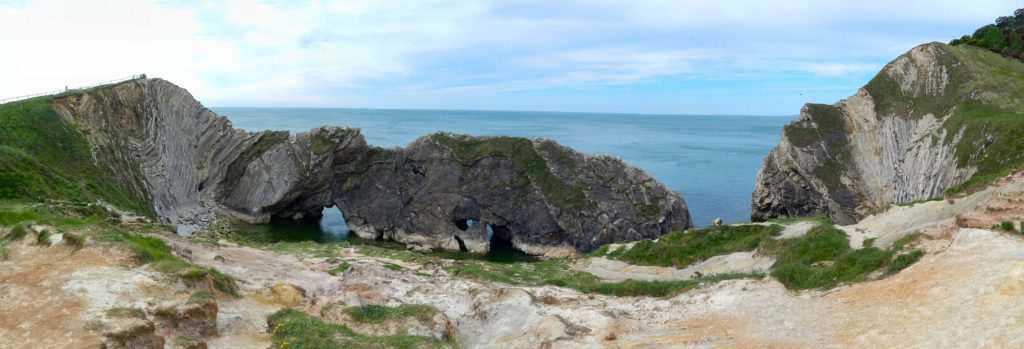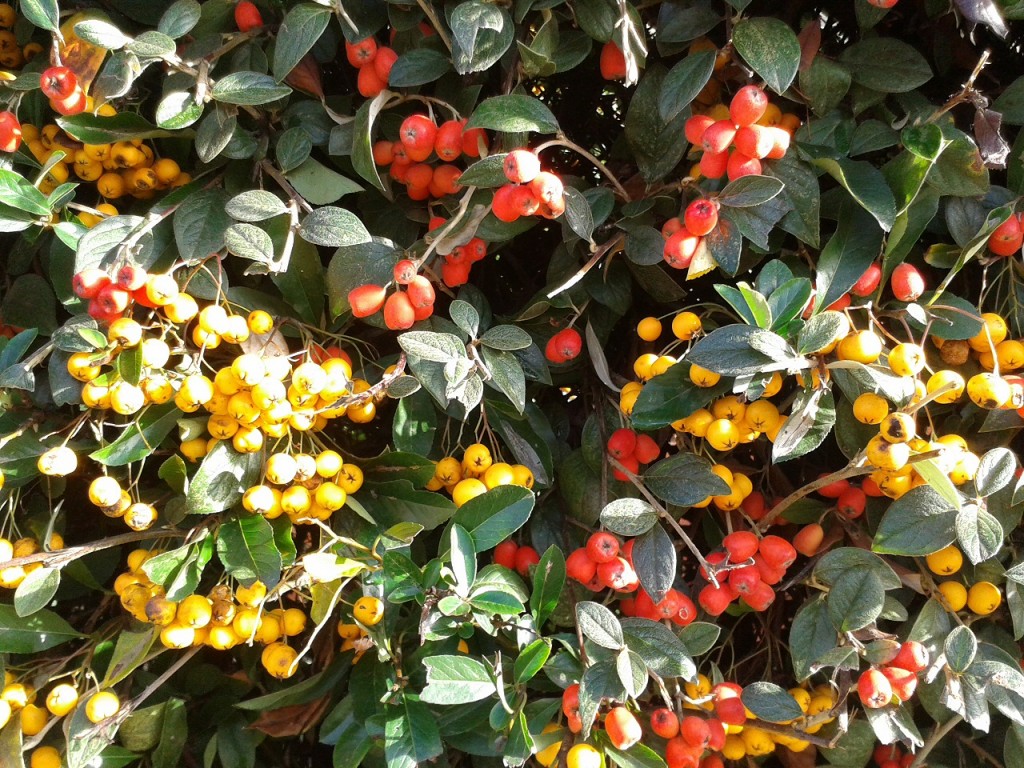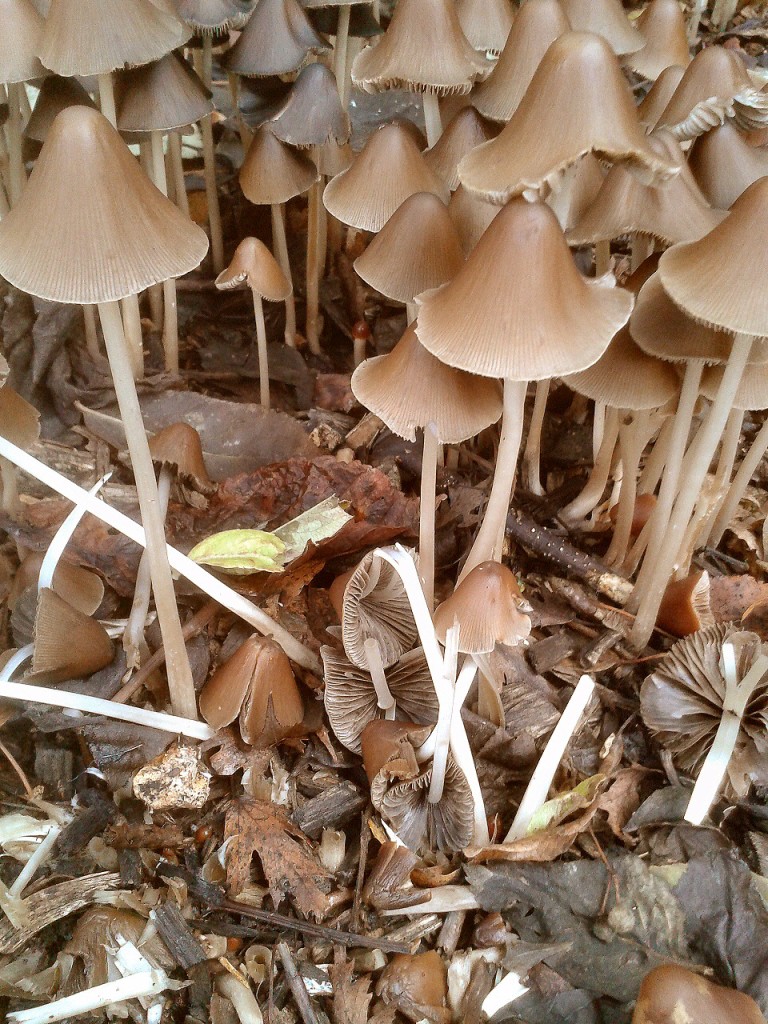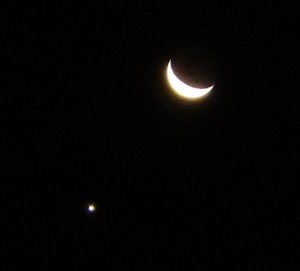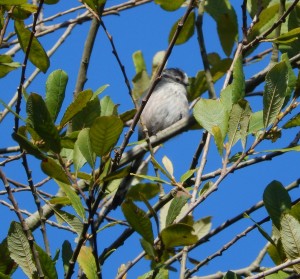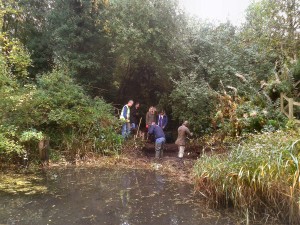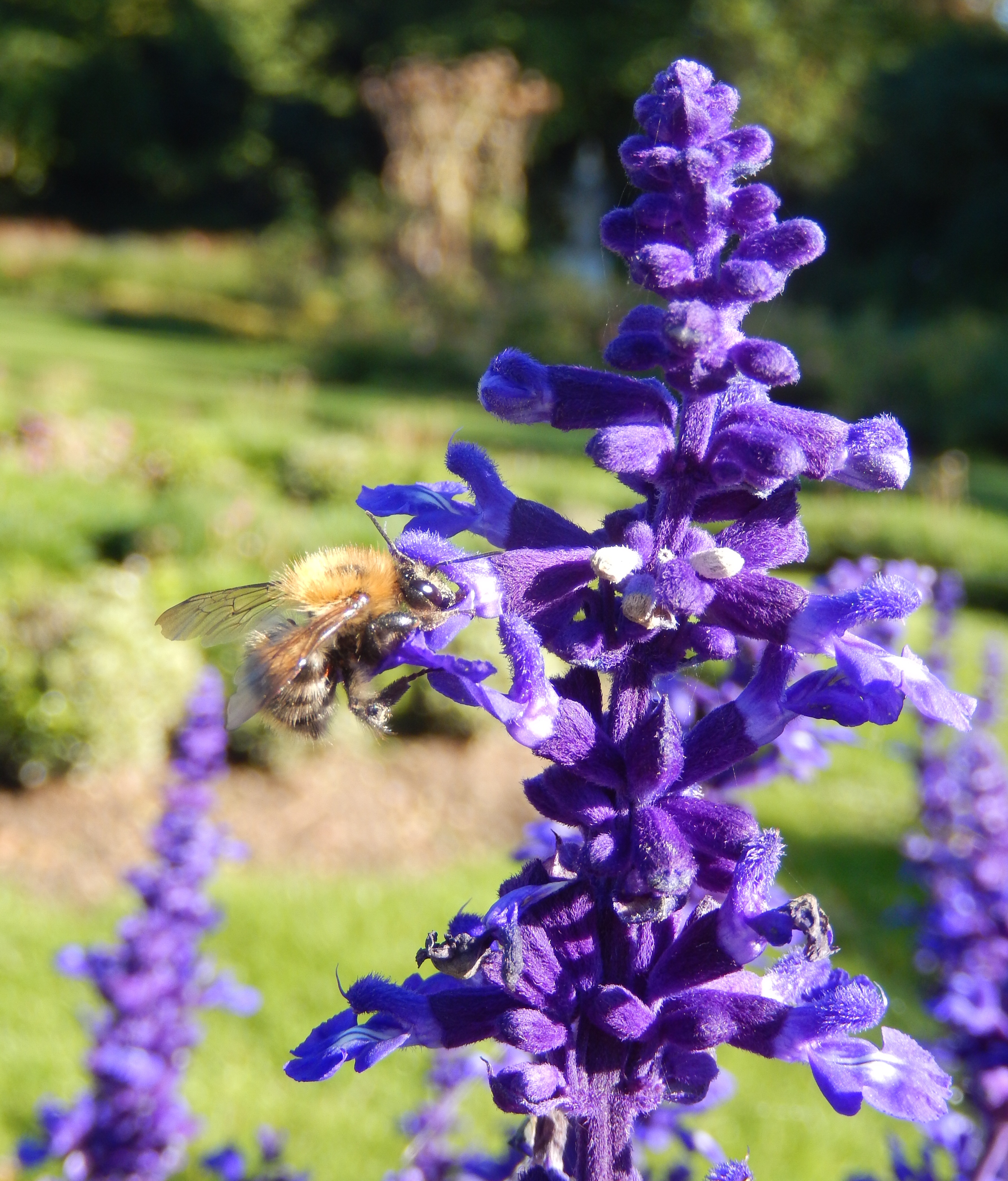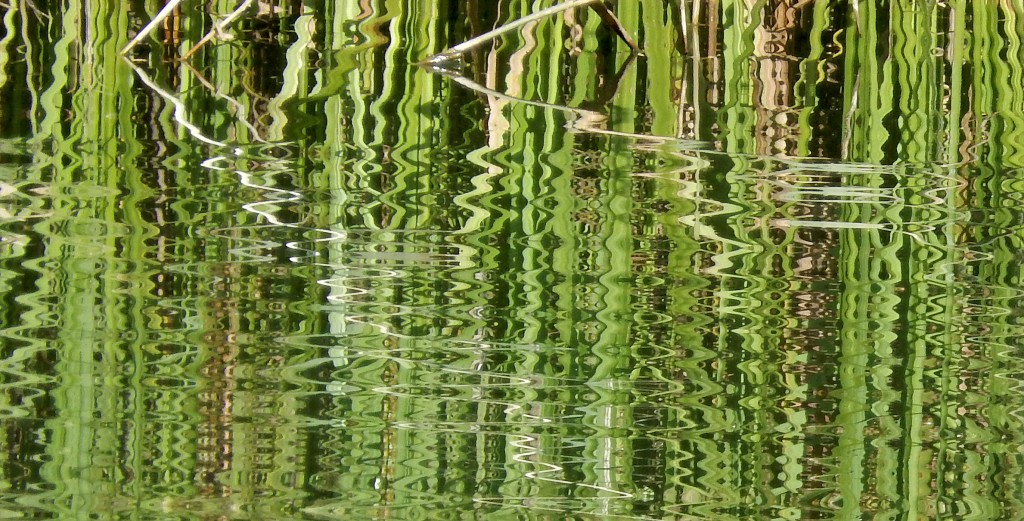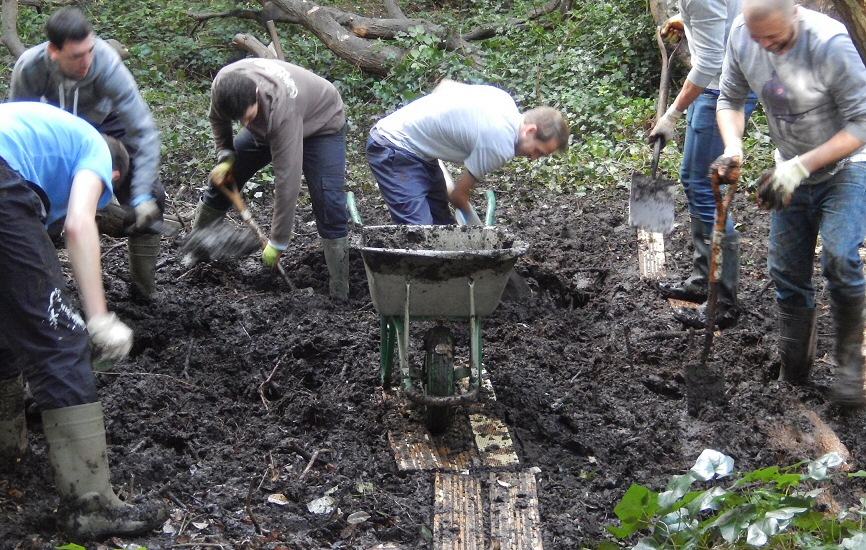
Images
Stair Hole, Lulworth
Winter Gulls
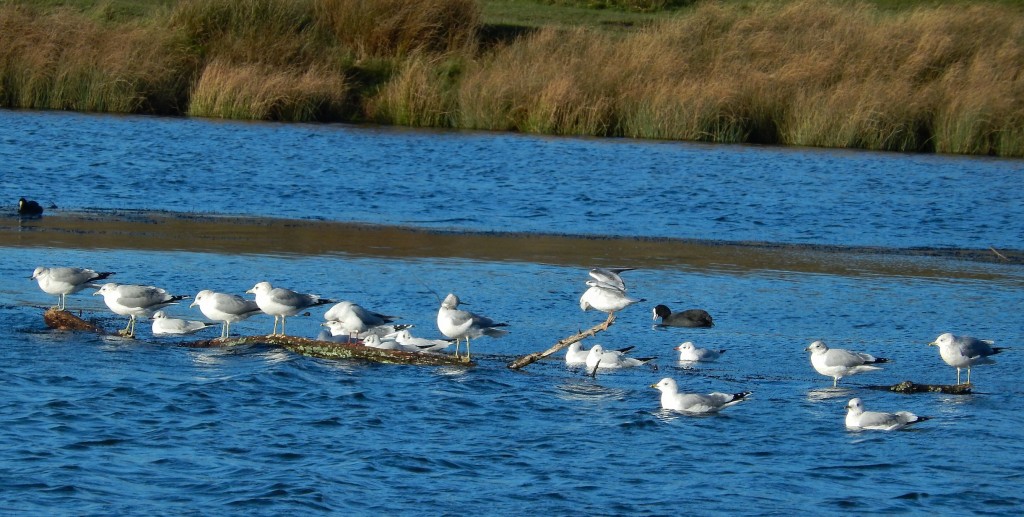
A fine cloudless day, with the jackdaws chasing about in the southwesterly breeze, the edge of Storm Eva that is blowing into the already flooded Northwest of Britain. A few winter ducks on the Pen Ponds – a Wigeon or two, a few dozen Gadwall – but the main surprise was the number of Common Gulls – at least thirty – in little flocks on both of the ponds. They can be seen here to have pale legs and ‘windows’ of white in their black wingtips, unlike the smaller Black-Headed gulls (there are one or two sitting in the water towards the left of the photo) which have very pale backs, no windows, and a black spot behind the eye (when they don’t have their chocolate-brown breeding hood, that is). Perhaps they have come down from the chilly North of Scandinavia to enjoy the very mild weather here.
Orange and red berries: Merry Christmas!
Masses of Mycena (Bonnet Fungi)
Crescent Moon, Morning Star, Autumnal Feeling
Corporate Group extends pond at Gunnersbury Triangle
Dizzy Days: Bumblebee on Sage in Chiswick Park
Ripply Green Reflections
Digging a ditch
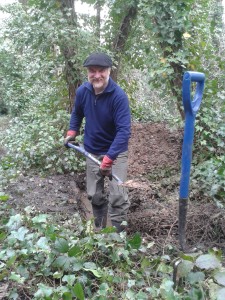
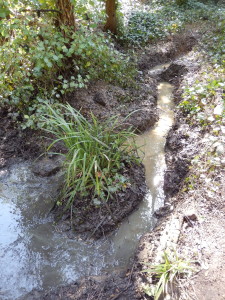
After just three short sessions of ditch-making, we have a little network of waterways, an island sporting a natural tuft of Pendulous Sedge, some impressively high banks of muddy, gravelly spoil, and a new feature for the reserve. We hope to extend the ditch down the natural line (was it a ditch before?) to the trees at the end. The existing seasonal pond certainly had a ditch-like extension to just across the path (from where the lower photo was taken), and we intend also to clear that out – it shouldn’t be difficult as, unlike the current ditchworks, there are no stones, roots or ivy entanglements to cut through.
Today (7 April) the sun shone in a cloudless spring sky, and we worked to the song of a Chiffchaff. Two Blackcaps were singing elsewhere in the reserve, along with Wrens, Dunnocks, Great Tits, Blue Tits and some non-vocal Magpies, a Jay, Wood Pigeons, a Heron and Mallard. The insects, too, have emerged to exploit the sudden warmth, with plenty of Peacock butterflies, a Brimstone or two, and a Holly Blue; I saw a Small White in my garden. There was a 7-spot and a Harlequin ladybird, and the pond was alive with a new crop of Pond Skaters.
The grass is racing up; Broom is coming into its handsome yellow pea-flowers; several tufts of garden-escape Mahonia and Daffodils are richly yellow; red deadnettles tempt several species of bumblebee including buff/white-tailed and carders, and the honeybees are active.

